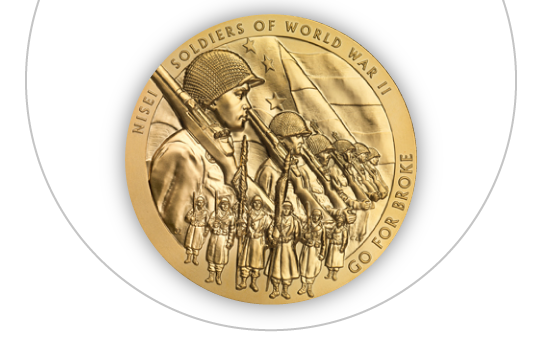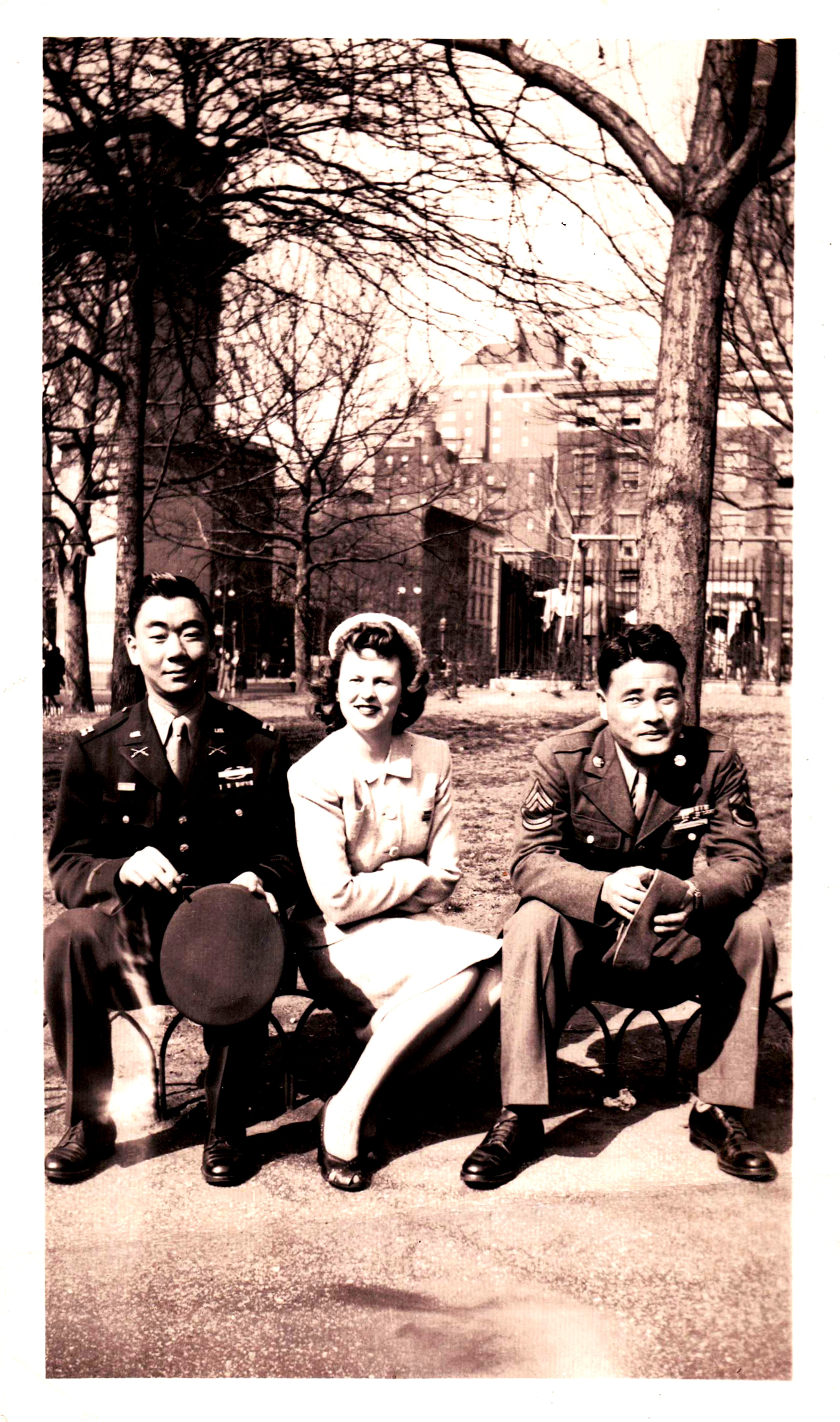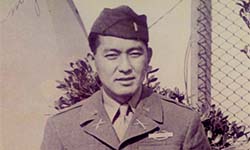Captain
Sakae Takahashi
Company B
100th Infantry Battalion
1919 - 2001
- Citizenship
- Courage
- Humility
- Respect
- Sacrifice

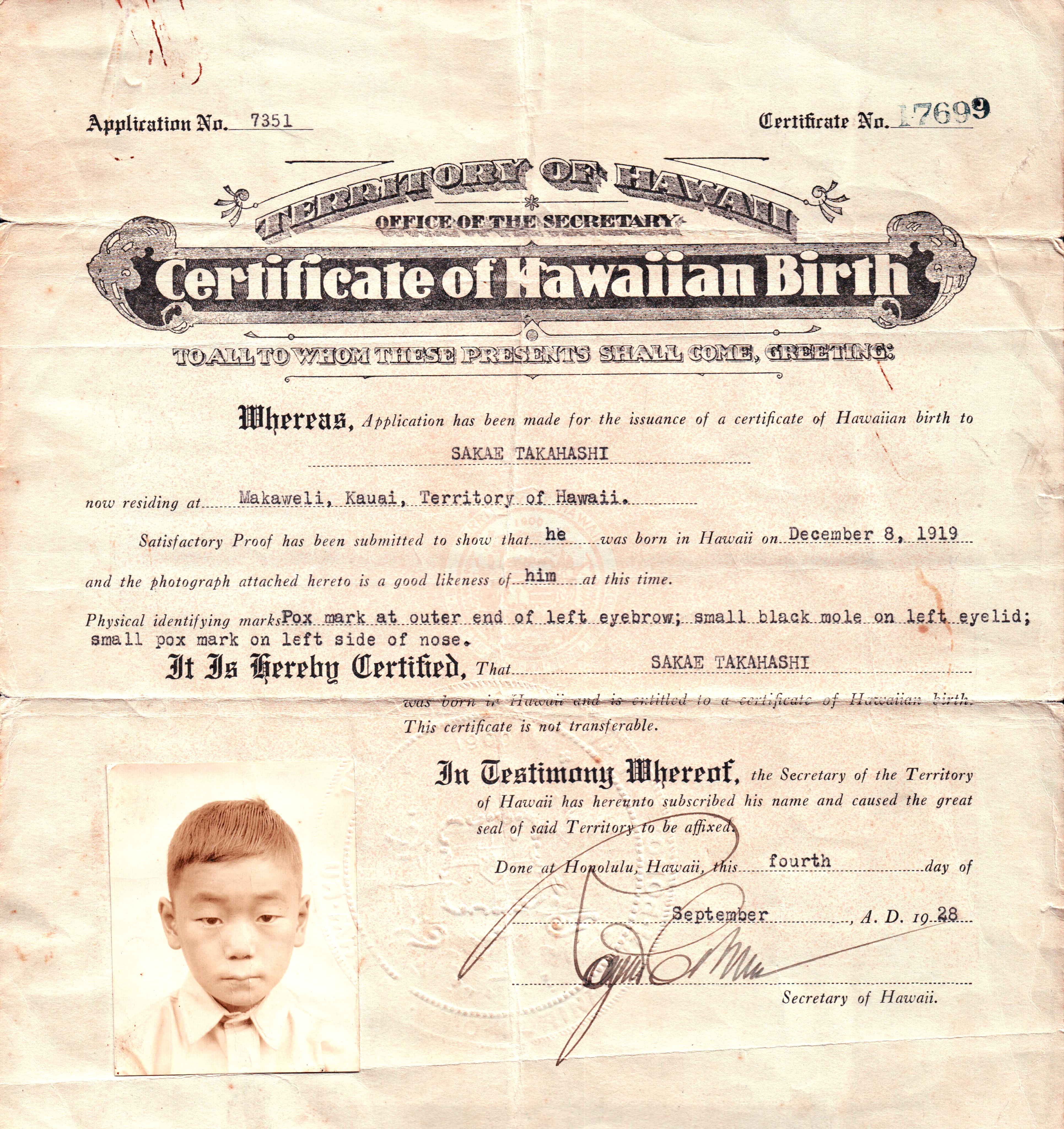
Sakae Takahashi’s birth certificate
Early Life in Hawaii
Sakae was a courageous leader on the frontlines of both war and societal change.
His life began in poverty on a sugar plantation in Kauai, Hawaii. His Japanese immigrant parents worked hard so that he and his siblings could go to school. An athlete who competed barefoot, Sakae finally got his first pair of shoes for his high school graduation.
Always humble, Sakae possessed a quiet confidence that led him to be elected student body vice president of Waimea High School. In addition to loyalty, honesty, and camaraderie, he held on to Japanese values of on (family obligation) and oyakoko (reverence of elders) throughout his life.

Family photo taken in 1935 when Sakae was in high school
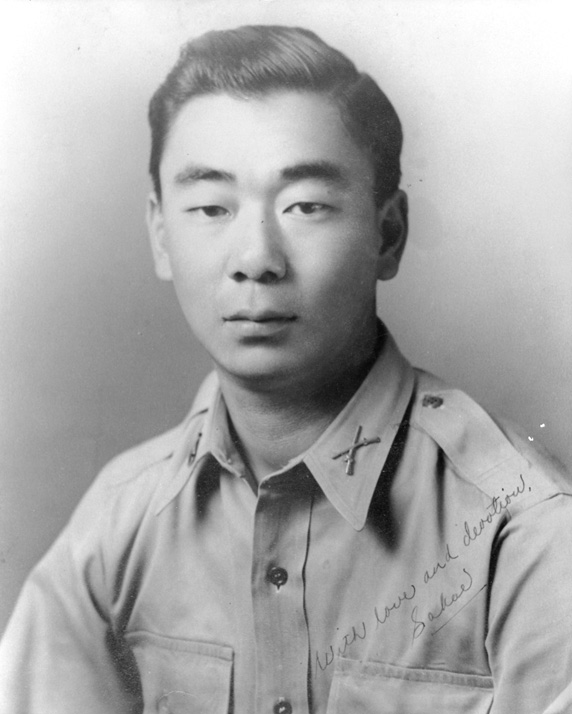
Sakae in the ROTC at University of Hawaii
Sakae enrolled at the University of Hawaii with a scholarship from the territorial government. A registered dual citizen of Japan and the US, he joined the ROTC.
In order to qualify for an Army Reserve commission, he renounced his Japanese citizenship to become solely an American citizen.
In 1941, Sakae was elevated to the rank of second lieutenant, becoming one of the few non-white US Army officers in the Territory of Hawaii.
He was among the first responders to the bombing of Pearl Harbor. Reporting to the Hawaii Territorial Guard at the armory in Honolulu, he distributed arms and ammunition and even stood guard. Weeks later, he served with the 299th Infantry, one of the two regiments of the Hawaii National Guard.
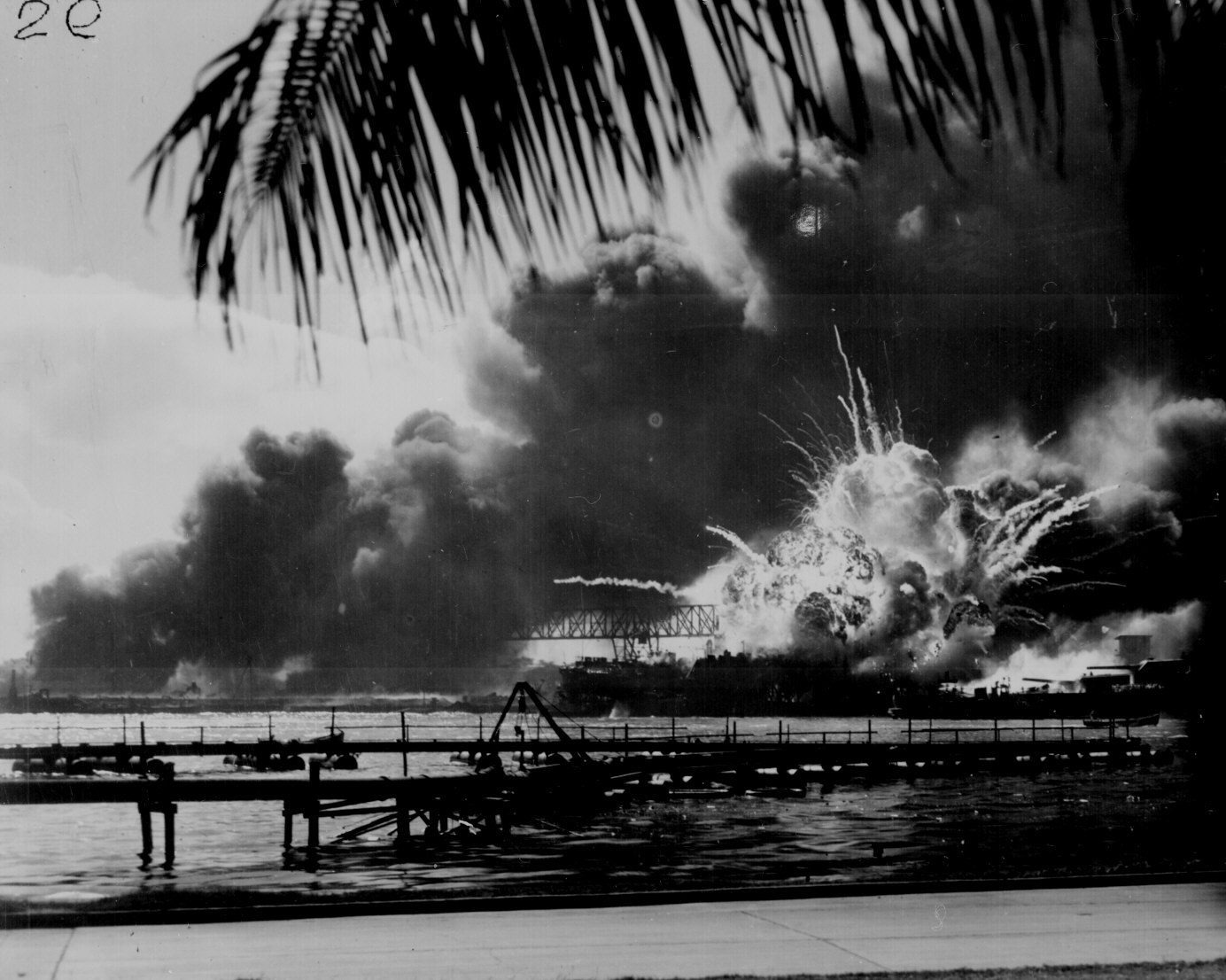
Sakae, who was from the island of Kauai, was teaching at Aiea Intermediate School overlooking Pearl Harbor in the fall of 1941.
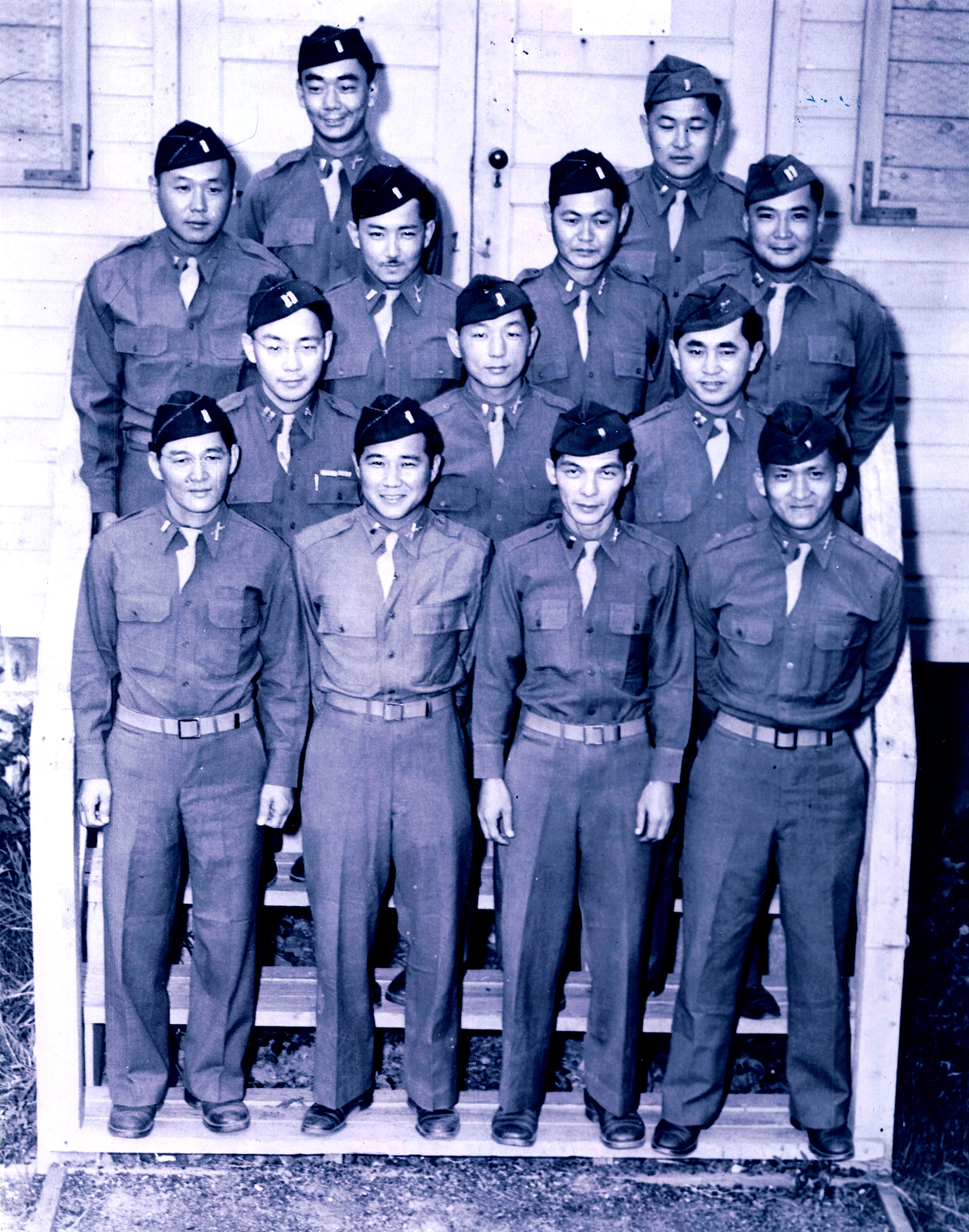
100th Infantry Battalion officers at Camp McCoy
100th Infantry Battalion
Racism against Japanese Americans led to the creation of the ethnically segregated unit, the 100th Infantry Battalion.
Sakae and his Nisei comrades were separated from the 299th Infantry and sent to a training camp in the mainland to be part of the 100th. The Hawaiian Nisei, who spoke pidgin English, referred to the unit as “One Puka Puka.”
We were fighting two wars, one for American democracy, and one against the prejudice toward us in America. That’s a fact, even in Hawaii.|Sakae Takahashi
While at Camp McCoy in Wisconsin, Sakae met a Korean American
officer from Los Angeles, Young Oak Kim. This began a close wartime relationship
between the two young men.
Young, a brilliant military tactician, was Sakae’s intelligence and operations officer with the 100th. When his superiors offered to reassign Young because of the historic animosity between Korea and Japan, he refused.
You’re wrong. They’re American, I’m American, and we’re going to fight for America.|Colonel Young Oak Kim
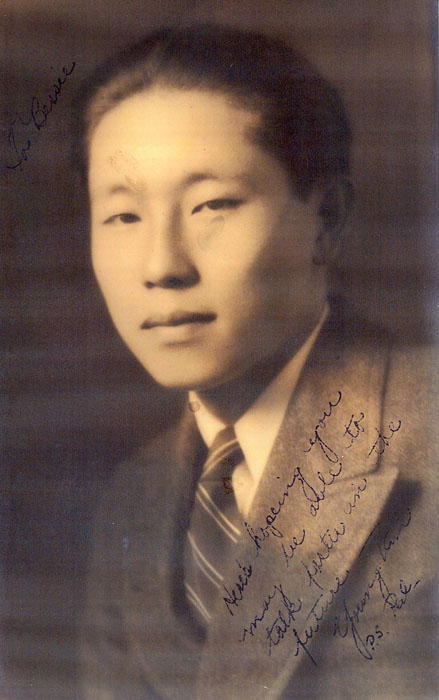
Colonel Young Oak Kim
After attending officer training, Sakae was deployed with the 100th to Algeria where the unit guarded supply lines to Northern Africa.
The 100th then made its first major assault into Italy in late September 1943. The assault was characterized as a suicide mission by one commander who was temporarily relieved of his duties. The 100th faced a heavily fortified enemy protected by a wall and a flooded valley with mines and craters of icy water. After a failed attempt to cross the Rapido River, Sakae was one of only three surviving officers and eleven soldiers who were not killed, injured or stuck in the mud.
If there ever was a scene that depicted World War I trench warfare, that was the place.|Sakae Takahashi|who was promoted to captain after the attack
Sakae would be wounded in action many times. He was hit by shrapnel in the back of the neck during the fighting at the Anzio beachhead, but never reported it. In June 1944, his eardrum was ruptured from a blast of a German 88-mm gun. After a brief recovery, he was back in action.
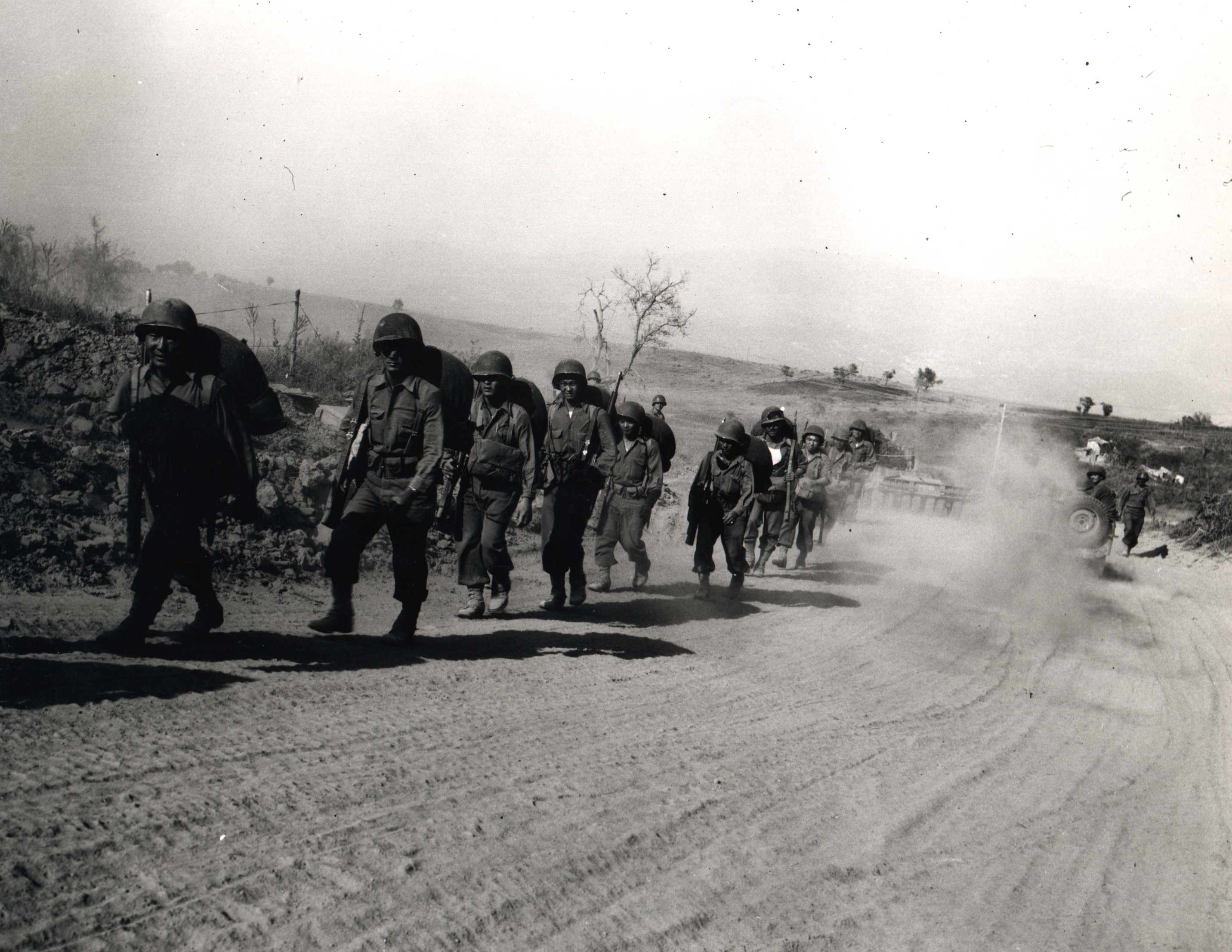
100th soldiers marching at Anzio beachhead towards Lanuvio, Italy
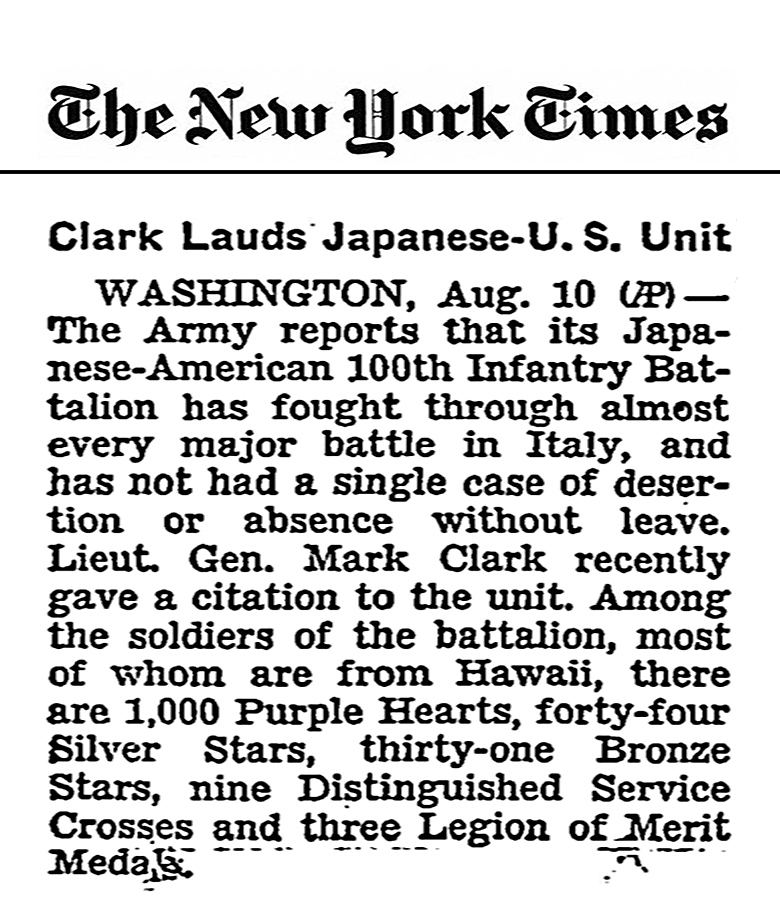
Presidential Unit Citations
Sakae led his Company B in a strategic military maneuver near the Italian town of Belvedere. The company flanked the enemy and cut off the main road north to Sassetta and Florence. The attack was extremely successful. Many German soldiers were taken prisoner.
For this accomplishment, the 100th Infantry Battalion was awarded its first Presidential Unit Citation. With widespread media coverage of the courageous exploits of the 100th, public perception of Japanese Americans was beginning to change.The Vosges mountain range in France was the site of another battle to break through enemy lines. The duo of Sakae and Young put themselves at risk to convince Germans to surrender. Dozens did, especially after Company B stormed a hill that was important in the occupation of Bruyères.
Company B was then ordered to take another hill, but this mission proved to be more treacherous. Surrounded by the Germans, the soldiers had to go into a nearby town and fight from house to house in close combat situations.
Sakae sustained a serious wound to his arm and was hospitalized. He was joined in recovery by a wounded Young.
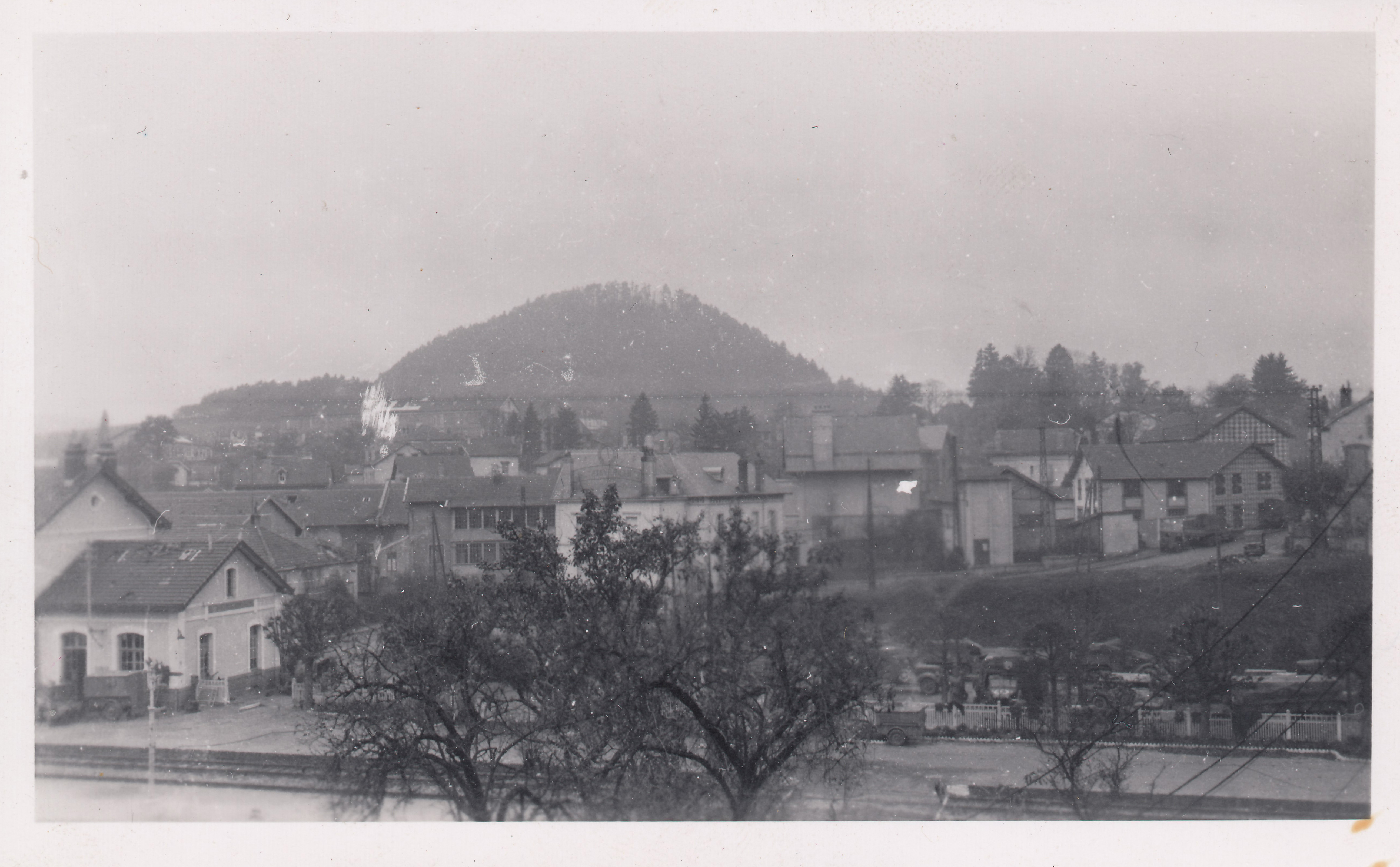
Town of Bruyères, France
Post-War
After 13 months of grueling battle, Sakae was honorably discharged and sent back home to Hawaii. He continued to serve as the head of two Army Reserves groups.
While recuperating in an army hospital in New York, Sakae spent time with another veteran from Hawaii, Daniel K. Inouye. Dan, who would later become a US senator, told Sakae that politics was the vehicle for positive change in their home state. Sakae married Bette, a woman from New York, and then attended law school on the GI Bill.
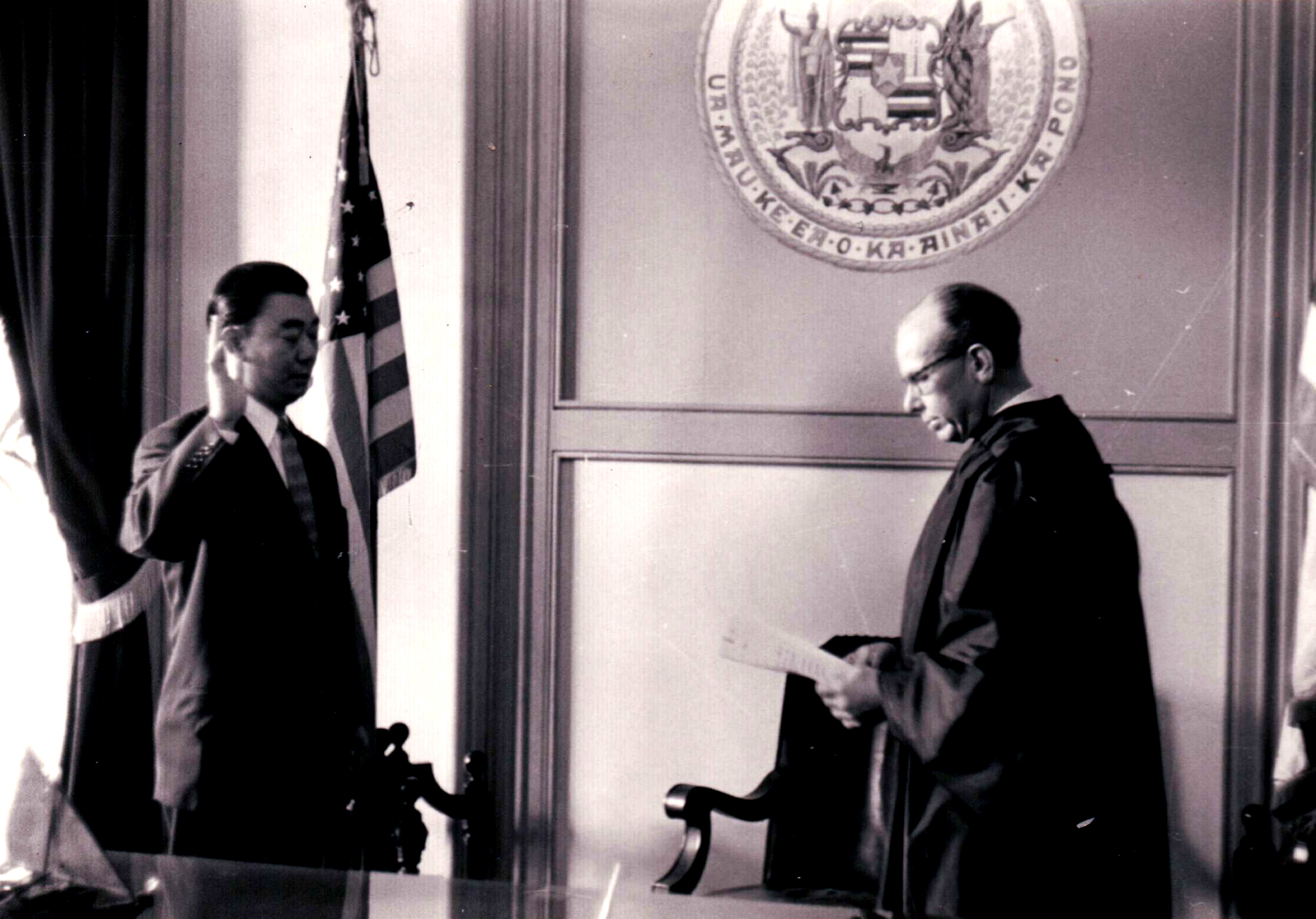
Sakae at his swearing-in ceremony to serve in the Hawaii Territorial Senate
Sakae was part of the Hawaii Democratic Revolution in the 1950s. He became the first Japanese American veteran to hold public office when he was elected to the Honolulu Board of Supervisors.
By supporting Democratic leader John A. Burns, Sakae was appointed territorial treasurer in 1951. Two years later, Sakae successfully ran for a seat with the Senate of the Territory. He served there for 20 years.
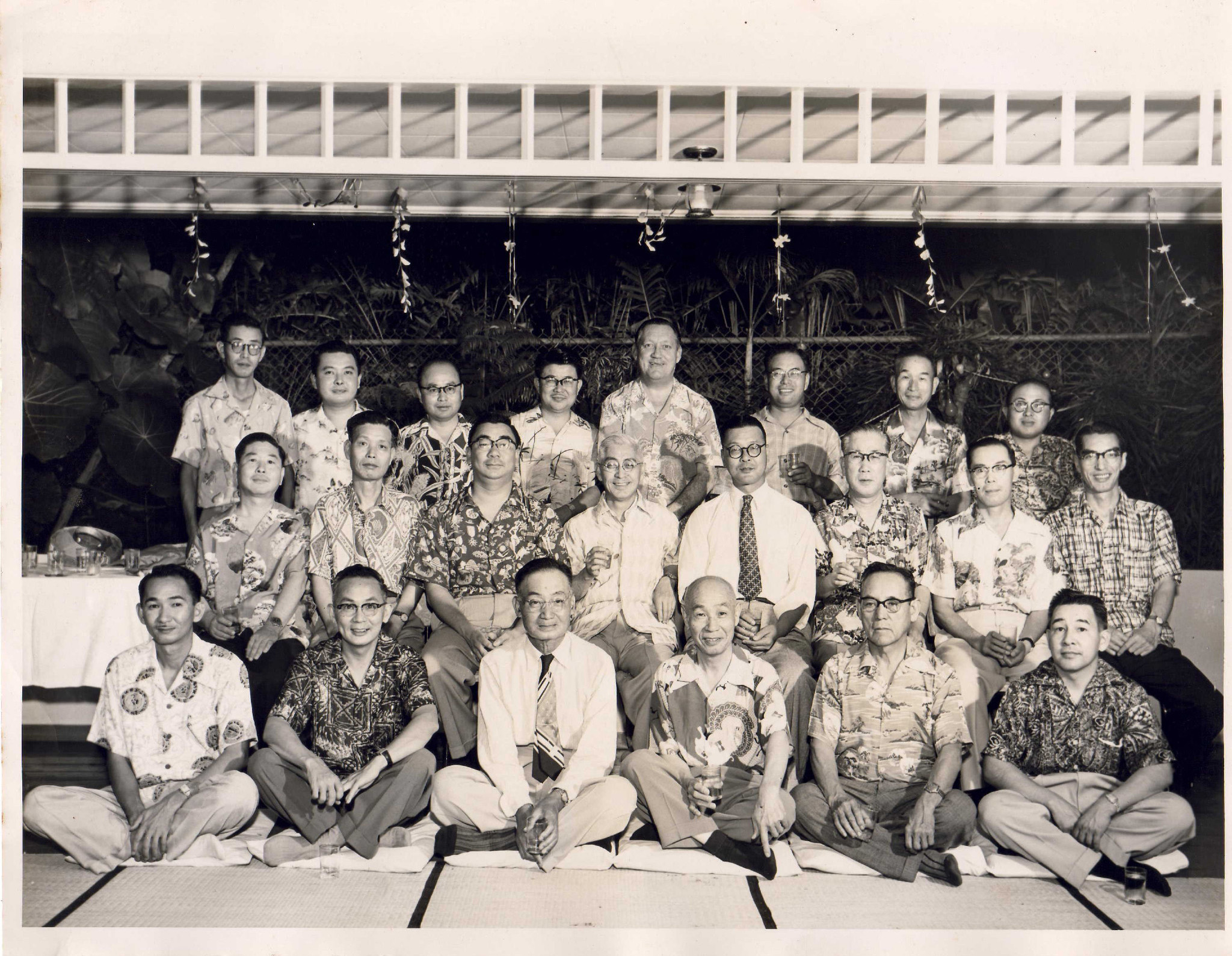
Founding Board of Directors of Central Pacific Bank
Sakae did not see political representation as the only solution to end racial discrimination. Unable to borrow money after World War II, even to buy a suit, Sakae wanted to create a bank that could provide loans to Japanese Americans for homes and emerging businesses.
He used his experience as territorial treasurer to spearhead the launch of Central Pacific Bank. The new endeavor involved both the Issei and Nisei leaders.
Legacy
Characterized as modest leader who often promoted others before himself, Sakae played a pivotal role in ensuring the military success of the 100th Infantry Battalion.
The wartime sacrifices of the 100th transformed the hearts of the American public, causing prejudice against the Issei and Nisei to diminish during the post-war years.
His forward-thinking attitude and leadership in the Democratic Party help mold Hawaii into the progressive state that it is today.
Sakae Takahashi was a great American. He was a leader in the executive branch, at the Legislature, on the battlefield, and in the boardroom.|Senator Daniel Inouye
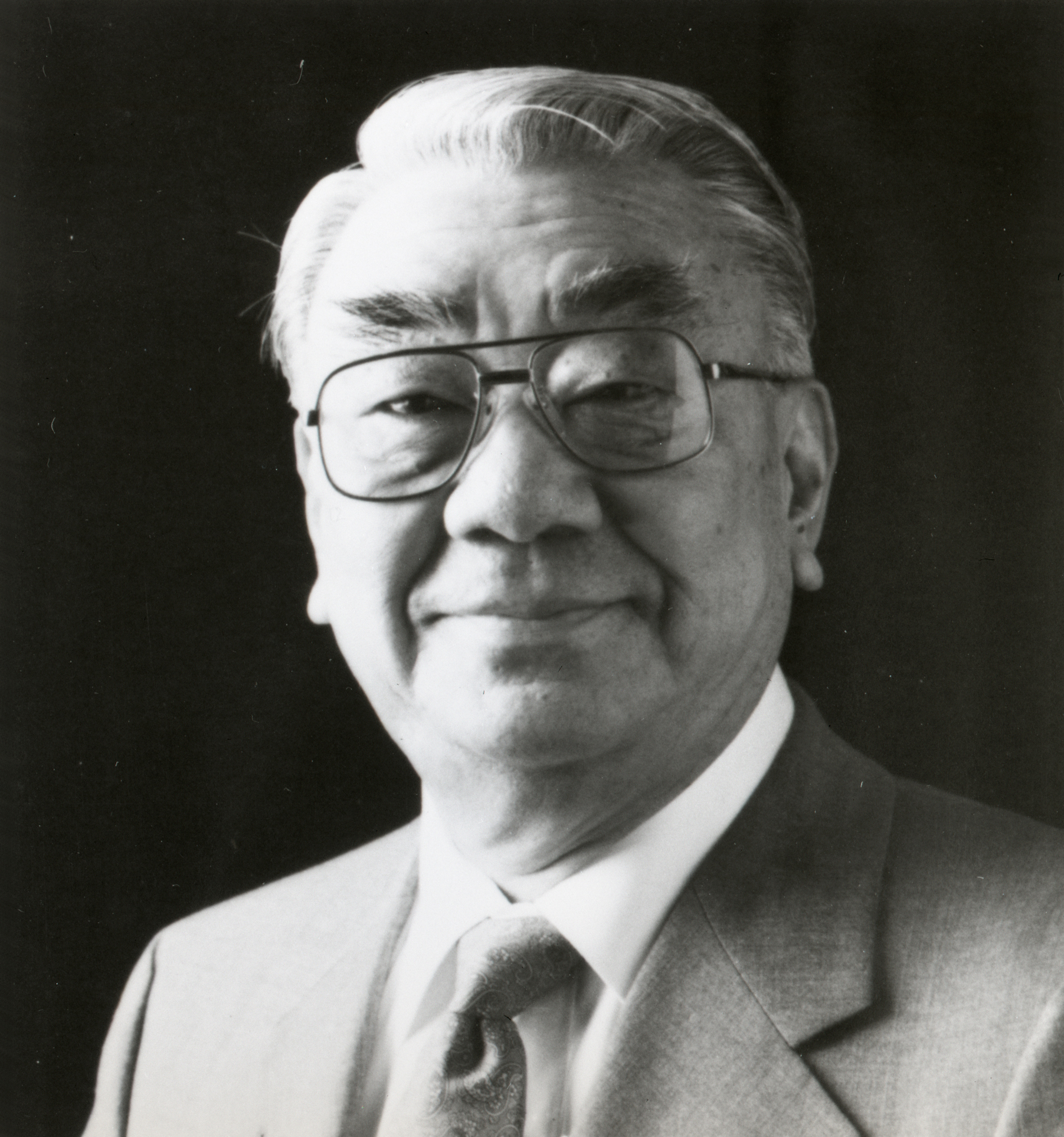
Sakae Takahashi
Resources
To learn more about Sakae Takahashi, visit Resources.
Credits
Photographs courtesy of the Takahashi family, the 100th Infantry Battalion Education Center, Densho, and the Kauai Historical Society. The video interview was made possible by the Go for Broke National Education Center.


